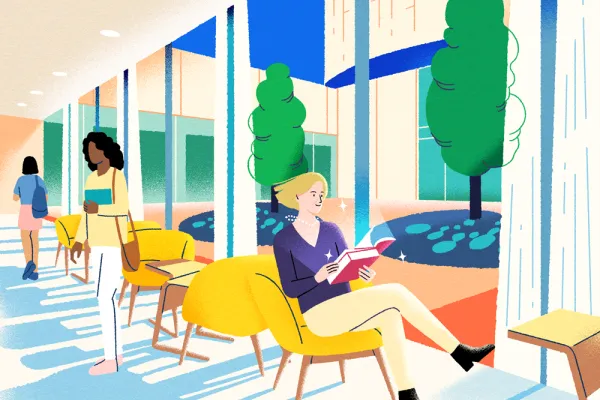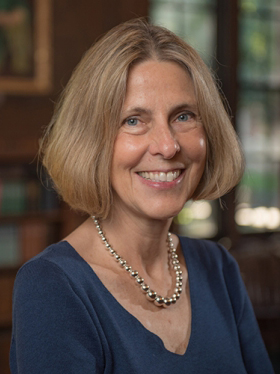‘A Setting Worthy of Their Excellence’
Smith Quarterly
Restored Access to Library Collections

Published October 4, 2021
AN EMILY DICKINSON POEM speaks of the hardship of “letting go /A Presence—for an Expectation.” For nearly four years, we let go the physical presence of our main library (though not its services) in the expectation of something infinitely better. More than once, library consultants told those of us on the committees that prepared for the Neilson redesign that Smith’s collections were among the best to be found at a liberal arts college—the facility that housed them, among the worst.
In her presentation to the Neilson architect selection committee, Maya Lin alluded only briefly to her gratitude to the college for taking in her late mother, Julia Ming Hui Chang Lin ’51, after her escape from China in a fishing boat with her Smith acceptance letter sewn into her shirt. But it was enough to show that for Maya the project would be a labor of love. She was already popping with creative ideas, and she assessed the prerenovation building with the crisply decisive statement, “We can do better.”
Alumnae from classes before the late ’70s may not realize how much the library had deteriorated since their own student days. What I remember from my graduation in 1974 is a comfortable, old-fashioned building with some handsome reading rooms, a place most students regarded fondly. In 1978–82 it suffered some unfortunate stop-gap new construction. Side-by-side additions and the sealing of all but the front door made Neilson a long, narrow cul-de-sac that bisected the campus. Inside, book stacks encroached on study space and cut off the light, systems were failing, leaks sprung, energy was wasted, technology became antiquated, and areas with chilly winter temperatures could only be warmed by creating torrid zones elsewhere.
As we all know, the new Neilson is bathed in natural light, a study in warm wood, stone, glass, nature-themed fabrics, live-edge furnishings, and lovely views of the campus and its surroundings. I’m eager for the opening of the Special Collections wing, with its grand reading room for scholars. I look forward to working there with some rare 17th-century editions of Chaucer recently donated by Judith Raymo ’53. Near its third-floor entrance, I love the serendipitous juxtaposition of an antique printing press and the Library of Congress books classed under Z, books on books, including the history of printing.
Up-to-date technology will please others and is essential for today’s students, but what means most to me is restored access to library collections in a setting worthy of their excellence and better suited to conserving them. Many will gravitate to the fourth-floor reading room, with its outdoor terrace and mountain views, or to the cushioned booths near the café, but I am likely to be found underground, amid the compact shelving where much of the on-site collection resides, in the daylit comfy seating around the sunken courtyard, with young trees on one side and many thousands of books on the other.
 Nancy Mason Bradbury ’74 retired in June after 34 years as a professor of English language and literature, a participant in the medieval studies program, and a founding member of the book studies concentration.
Nancy Mason Bradbury ’74 retired in June after 34 years as a professor of English language and literature, a participant in the medieval studies program, and a founding member of the book studies concentration.
This story appears in the Fall 2021 issue of the Smith Alumnae Quarterly.
Illustration by Yifan Wu